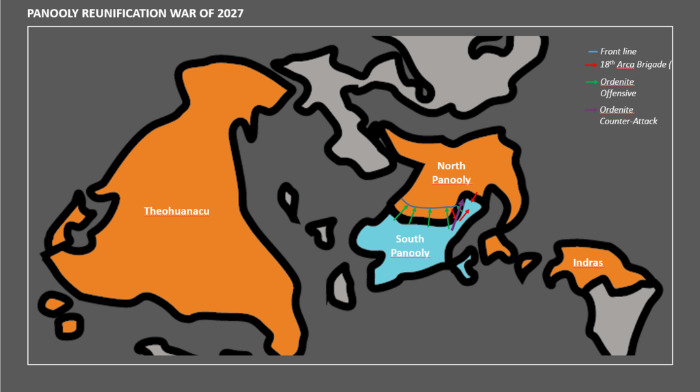1st Ordenite Army Group
The 1st Ordenite Army Group was labeled as the prong that would drive up the center and attached to it was the single Waffen SS field army that had seen action in the first RSU war and had even been on the ropes to deploying back to RSU when the first week of combat in Kashubia occurred. When the orders came that Operation Wolverine was to begin, the 1st Ordenite Army Group immediately begun advancing from the center of the Demarcation line and forward, engineer units were up front in order to minimalize casualties from possible mine fields and any other booby traps laid for the defense of North Panooly. Any encounters with Macabeean forces would at first be engage if engaged as vehicles equipped with loud speakers would project a message asking for the peaceful surrender of Macabeean soldiers and that they would not be engaged nor harmed in captivity. Of course this message would most likely not garner the response Ordenite forces would hope for and would likely be given the order to engage and destroy Macabeean units who didn't accept surrender. Unlike how the war was being fought against the Mokans and their allies in Kashubia, the Ordenites now advancing into North Panooly would conduct the war in a 'gentlemen' like fashion.
The Ordenite Luftwaffe were most likely to score the first real shots in the war as they were given access to intelligence sources on Macabeean and Panoolie defenses and positions, SAM sites and radar structures along with defense structures, communications and command and control targets would be targeted by the array of bombers and Lu-45 war hawks in the disposal of the Luftwaffe in Holy Panooly. Cyclone reconnaissance hunter drones would be deployed in masse by their handlers to keep real time data and surveillance on Macabeean and Panoolie defenses and troop movements on the ground in order to keep the offensive well informed and prepared for any counters the enemy may do in the opening moments of the invasion. Army Group A would be driving up the western coast and flank of Army Group C and would conduct in the same manner as its objectives would be more focused on taking over coastal towns and cities in lightening speed and denying the harboring of the Macabeean Navy. Army Group B would drive up the eastern coast and do the same as Operation Wolverine called for the capturing of both coasts to deny the harboring of the Macabeean Navy's assets in Holy Panooly.
The Kriegsmarine in South Panooly upon Operation Wolverine being a go would assume defensive posturing in South Panooly's territorial waters in anticipation of a possible engagement with the Macabeean Navy due to the out break of war. It seemed that war would once again consume Dienstad and that the Golden Throne essentially being handicapped due to a war with Scandinavian would have to defend it's self against a hungry wolf.











